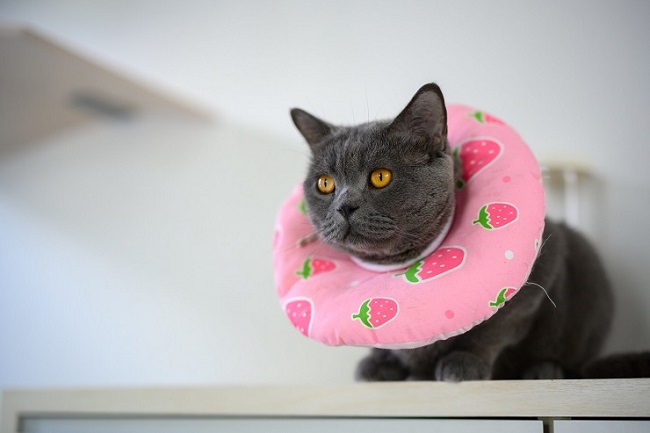A common sight after a visit to the vet is a cat donning the infamous “cone of shame,” officially known as an Elizabethan Collar.
While these cones are designed to prevent cats from injuring themselves or interrupting the healing process after surgery, they can often cause distress and discomfort.
Fortunately, there are numerous cat cone alternatives available. This comprehensive guide discusses these options, their benefits, drawbacks, and how to select the best fit for your furry friend.

Understanding Cat Cone Alternatives
Cat cone alternatives aim to provide a more comfortable yet effective way to prevent cats from licking or scratching their wounds, allowing for uninterrupted healing.
Read Also:
These alternatives include inflatable collars, soft cones, recovery suits, and neck control collars. Each of these options presents unique advantages and potential concerns, which we will delve into further.
Inflatable Collars
Inflatable collars resemble a travel pillow and wrap around your cat’s neck, restricting their ability to reach wounds or surgical sites. They offer greater comfort and mobility than traditional cones and allow cats to eat, drink, and sleep without hindrance.
However, some persistent cats may still manage to reach certain parts of their body, like the tail or hindquarters, even with these collars.
Soft Cones
Soft cones are a direct replacement for the traditional hard plastic cone, but are made from softer, more comfortable materials like fabric or foam. These cones are less likely to cause injury or discomfort if your cat bumps into furniture or walls. However, they may not be as effective as hard cones or other alternatives for more persistent cats.
Recovery Suits
Recovery suits are a full-body solution, essentially acting as a protective onesie. They can provide comprehensive coverage, making it nearly impossible for your cat to reach the surgical site or wound.
While recovery suits are typically more comfortable and allow full mobility, some cats may feel stressed wearing them, and they can complicate litter box use.
Neck Control Collars
Neck control collars function by limiting neck movement, which prevents your cat from turning their head to reach their wounds. These collars are generally comfortable and allow your cat to retain full body mobility. However, they might not be suitable for wounds located on the tail or lower body areas.
Choosing the Right Alternative
When selecting a cat cone alternative, consider your cat’s personality, the wound or surgical site’s location, and the predicted recovery time.
Consult with your vet to discuss the best options, and monitor your cat closely after implementing the alternative to ensure its effectiveness.
Safety Considerations When Using Cat Cone Alternatives
While cat cone alternatives can offer more comfort than traditional cones, it’s crucial to take safety considerations into account. Here are a few points to remember:
Proper Fit
Whether you choose an inflatable collar, soft cone, recovery suit, or neck control collar, ensuring a proper fit is crucial. A fit too tight can cause discomfort, restrict breathing, or lead to chafing.
On the other hand, a fit too loose might not provide the necessary restriction to prevent your cat from reaching their wound or surgical site.
Monitoring Your Cat
Keep a close eye on your cat after introducing a new alternative to the traditional cone. Look for signs of distress or discomfort. If your cat seems extremely upset or can’t adjust to the alternative, it may be necessary to try a different option.
Wound Access
Even with a cat cone alternative in place, you’ll need to access the wound or surgical site to clean it or apply medication.
Ensure the alternative you choose allows for easy access to the wound site without completely removing the protection.
Transitioning From Traditional Cone
When transitioning from a traditional cone to an alternative, it’s advisable to make the change gradually. Start by introducing the alternative for short periods under supervision, gradually increasing the duration as your cat adjusts. This will help your cat get used to the new device and minimize any potential distress or confusion.
Read Also:
Conclusion
Cat cone alternatives offer a range of solutions to the traditional cone, addressing the need for wound protection and healing without causing excessive discomfort to your pet. By understanding each option and consulting with your veterinarian, you can make the best choice for your cat’s comfort and health.
























